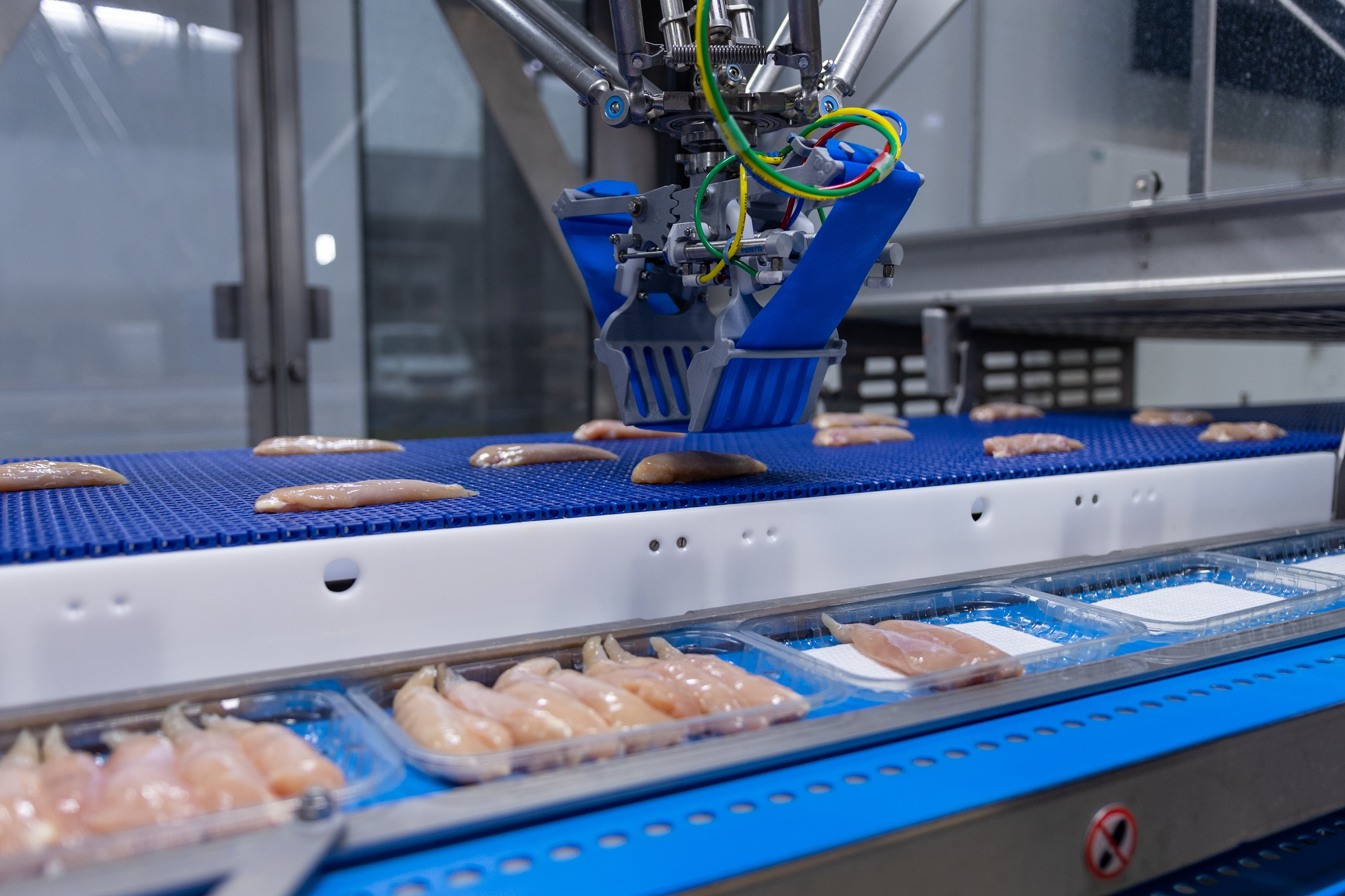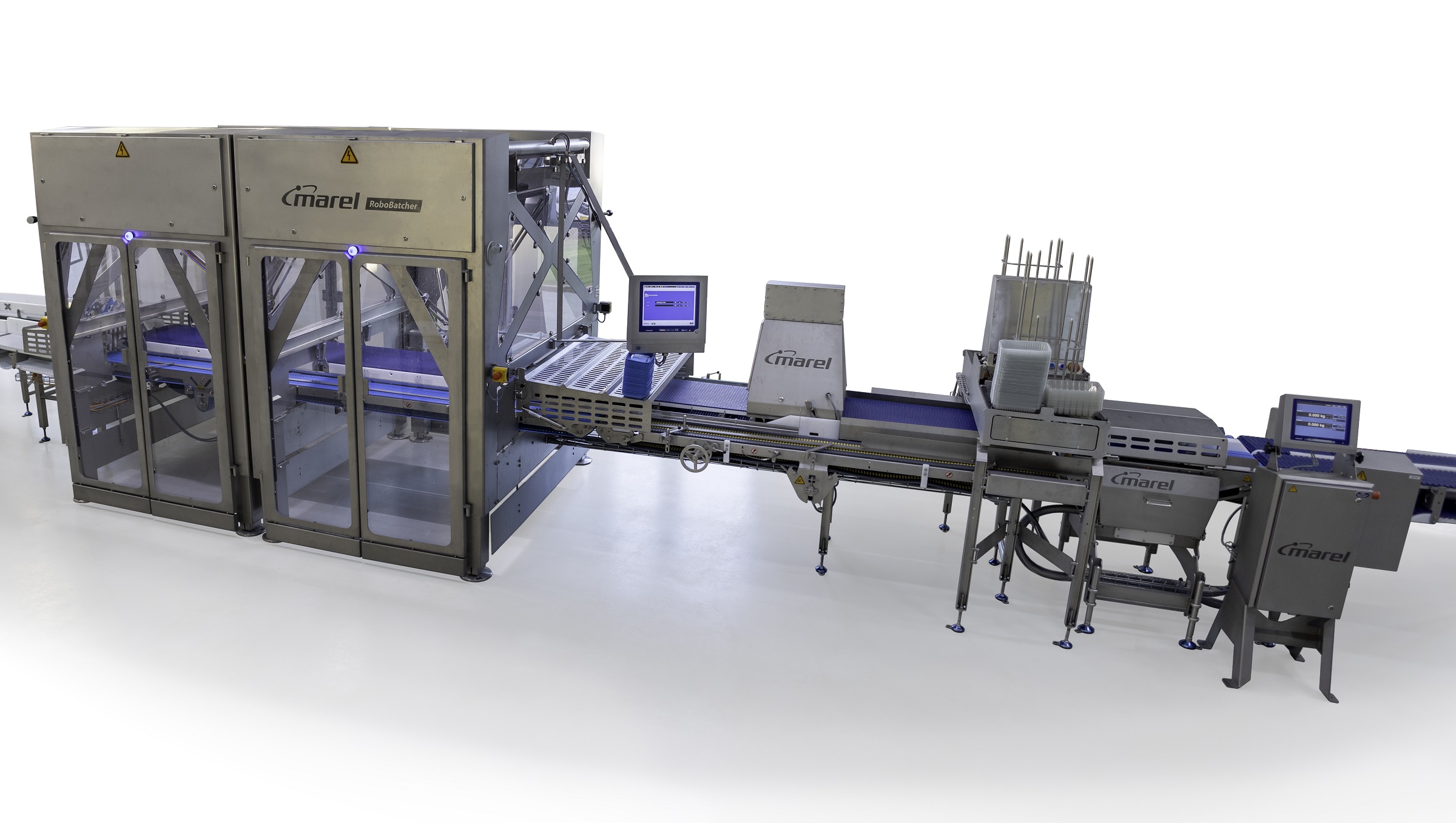Minor but crucial adjustments to fit the tenderloin product.

Mikkel Knudsen
Marel global product specialist

Until now, in those markets where chicken tenders are sold on trays such as France, Belgium and Germany, these packs have been put together by hand. Given the shortage of labor in these markets, automation is the better option. That is exactly what Marel’s RoboBatcher Flex for tenders does. Featuring a new gripper, the robot improves on a manual operation by speeding up the process, minimizing giveaway and achieving state-of-the-art styling results.
Until now, the stream of tenders coming from the breast deboning equipment has been processed manually. Most of the time, this involves operators packing tenders one by one while estimating the weights of tender batches and finally weighing trays manually on an off-line weighing scale. RoboBatcher is the ideal solution for automating this job.
Minor but crucial adjustments to fit the tenderloin product.

Mikkel Knudsen
Marel global product specialist
Packing tenders in trays is labor-intensive, as quality is very important. In countries such as France, Belgium and Germany, tenders have a very high value and must be handled with care. Saving several workers per shift on this monotonous packing job, the RoboBatcher Flex for tenders outperforms a manual operation in terms of speed, accuracy of grading and batching as well as minimizing giveaway. A processing plant in the above countries will produce plenty of tenders to keep the RoboBatcher Flex running full-time. If needed, the gripper can be changed over in a couple of minutes to batch and pack fillets, legs or drumsticks. Using the unique SystemFlex conveyor logistics, these different products can be easily rerouted to make maximum use of the RoboBatcher. Besides reducing the need for labor, RoboBatcher Flex for tenders improves hygiene and food safety because fewer people are handling and touching the meat.
In addition to RoboBatcher’s dedicated grippers for fillets, legs and drumsticks, a fourth gripper has been developed for tenders. Once again, it features state-of-the-art technology, resulting in the precise, careful handling of tenders. The gripper picks up the tender and descends into the tray, which moves along with the belt. When its jaws open, tensioning of the belt between them positions the tender. The RoboBatcher Flex for tenders operates at high speeds. Acceleration forces reach up to 10G. Using a heavy gripper could reduce performance and increase the risk of damage. The new gripper features several 3D-printed parts that require fewer bolted joints, making it lighter and able to move faster. It is also easier to clean.

Mikkel Knudsen, Marel global product specialist, says, “The RoboBatcher tender gripper has been designed on the same gripper platform as the standard fillet gripper. It has become a little smaller and without a tail bend that we needed for fillets. The working principle of the gripper is similar to the breast fillet gripper. We allow the gripper to place products directly in between products already in place, giving full control of the tray patterns and styling results. These are minor but crucial adjustments to fit the tenderloin product.”
All RoboBatchers are now equipped with new robotframe housings. The robotframe makes cleaning and maintenance easier and makes the operations inside the machine more visible. The big difference is that the electrical section has moved from the rear of the machine, taking up all the space there, to the top. This change enables better access to the machine with doors now on both sides. The improved accessibility makes cleaning and maintaining the machine easier. It benefits hygiene. RoboBatcher’s HMI screen has become movable, allowing it to turn it to either side of the machine. That’s a huge advantage, especially for in-line production. Operating the machine is easier now that its touchscreen is accessible from both sides. The scanner has been repositioned behind the de-nester, so there’s a longer buffer time to improve tray flow. There’s plenty of room for the buffer de-nester without making any changes to the system. The new robotframe design is more modular, making different RoboBatcher setups easier.

News
Our dedicated team is here to help and answer any questions you may have. Please complete the form, and we’ll get back to you as soon as possible. We look forward to hearing from you.